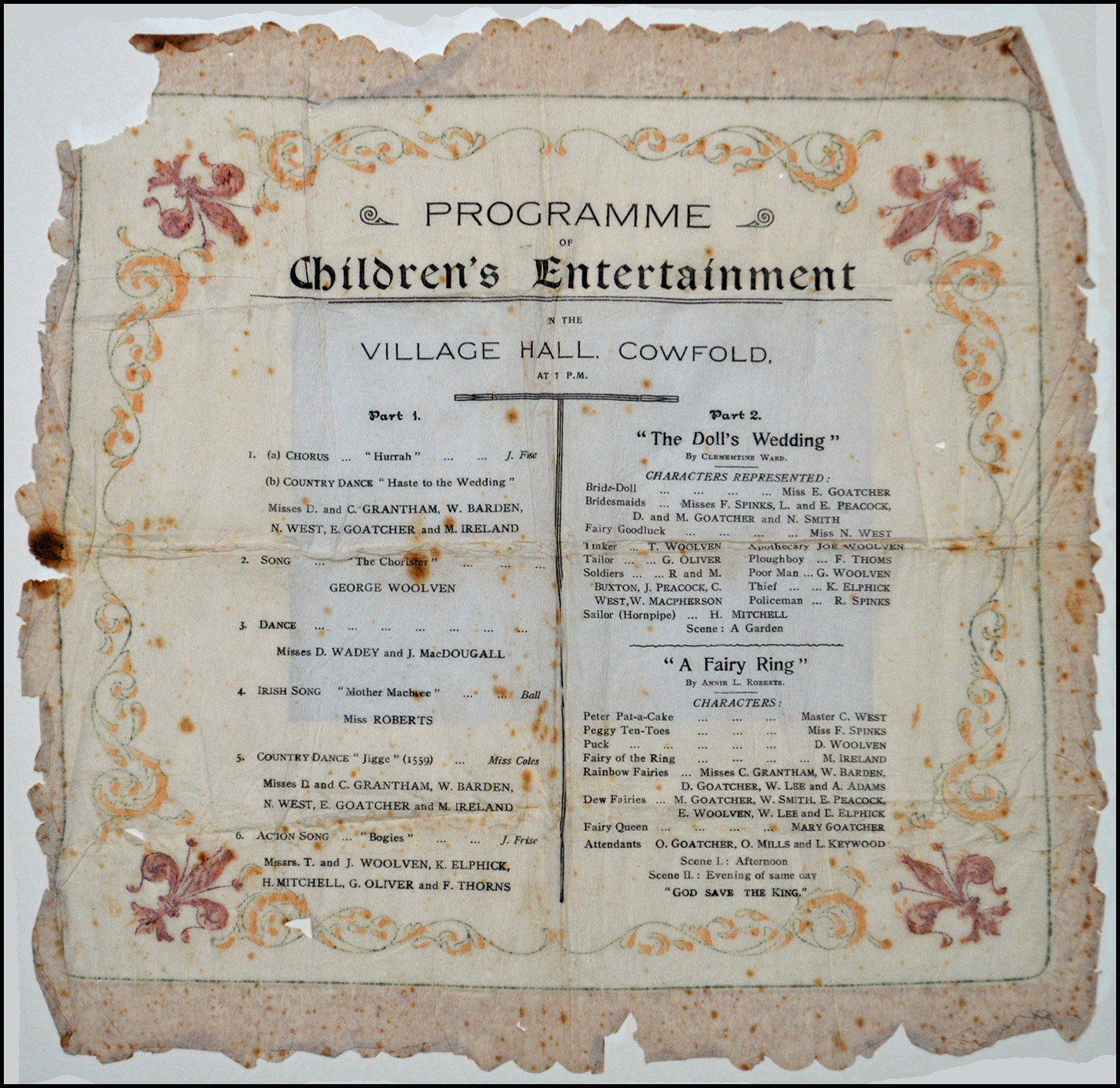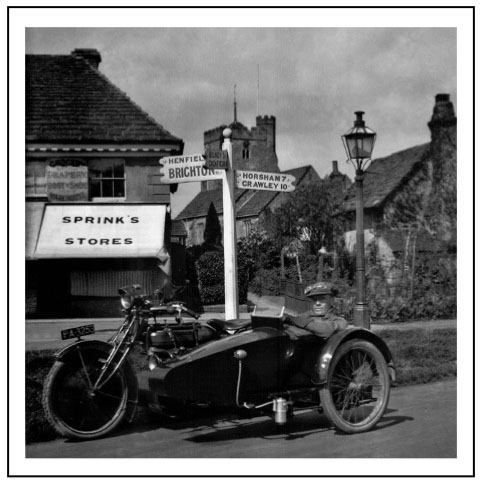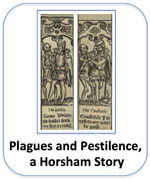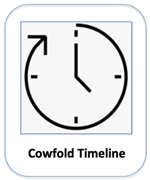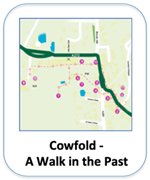Welcome!
Welcome to the Cowfold Village History Society website. We hope that you enjoy browsing through the material collected about the history of our village and will find the records of our past as fascinating as we do.
We are always pleased to receive comments on the website itself (good or bad!) and will also be grateful for any additional material for inclusion on the site, or for help on our various ongoing projects. You can contact us by completing the form here.
Extracts from the Vestry Minutes, 1872 to 1885
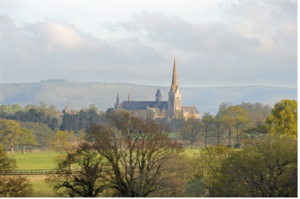 The Society is lucky to hold historical records of the village that were compiled by David Pavitt in the 1960s and 1970s. The collection includes extracts made by David from Cowfold Vestry Minutes.
The Society is lucky to hold historical records of the village that were compiled by David Pavitt in the 1960s and 1970s. The collection includes extracts made by David from Cowfold Vestry Minutes.
Two of the extracts have recently been digitised by Deborah Hart that cover the period from 1872 to 1885, during which the Monastery at Picknowle was built. One relates to re-routing a footpath from the Henfield Road to Jolesfield Common/Littleworth that crossed the site of the Monastery. The second concerns the escalation in costs associated with maintaining the local roads because of the increased construction traffic and the advent of heavy traction engines.
The extracts can be accessed here.
Children’s Entertainment Evening at the Village Hall c. 1910
We have recently been contacted by Bob Barden whose father and sister were born in Cowfold and attended the village school. His grandad, Calvin Edward Barden, was a saddler by trade and was based at 1 Elm Grove in Station Road.
Bob has discovered a paper serviette on which is printed the programme for a Children’s Entertainment Evening at the Village Hall. He is not sure of the precise date but thinks that it is around 1910.
We thought that many of you would be interested to see this charming example of local social history.
Sir William Bull’s Parish Magazine Articles from the 1920s
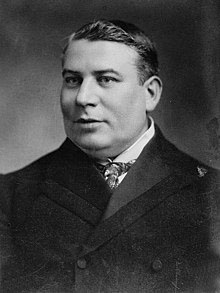 We have recently retrieved a type-written copy of a series of articles by Sir William Bull that were published in the Parish Magazine in the 1920s.
We have recently retrieved a type-written copy of a series of articles by Sir William Bull that were published in the Parish Magazine in the 1920s.
He was born in 1863 and was a Member of Parliament for Hammersmith from 1900 to 1918 and then sat for Hammersmith South until 1929. He was knighted in 1905 and created a baronet in 1922. He died in 1931.
Although he never lived in the village, he states in the magazine articles that his ancestors migrated to Cowfold in the 1300s and remained there for over 300 years. He claimed to be very fond of the village and knew it, and some of its inhabitants, for over a quarter-of-a-century.
He was invited by the Vicar to write the articles and his intention was to include items of interest which could later on form the nucleus of a history of the parish.
The articles have been carefully digitised by a longstanding friend of the Society and are now available to read here.
We hope that you enjoy them.
An extract from the Cowfold Churchwardens’ Accounts in 1670
Many of you will have seen a copy of the receipt for the donation of 53 shillings and 9 pence (now worth approximately £400) made by Cowfold towards the relief of Londoners who had suffered as a result of the Great Fire in 1666. (The original is on display at the Museum of London.)
The Churchwardens’ Accounts for Cowfold for the period 1636- 1718 (held by West Sussex Record Office) include the following entry for January the third 1670 that refers to a church collection made just over three years after the Great Fire appeal:
Then received of Mr George Winter Recto[r]
Of the parishe of Cowfold w[i]thin the Rape
of Bramber in the County of Sussex per the
full su[m]me of Seaven pounds and Two
pence collected in the said parrishe
towards the redempt[i]on of the Englishe
Captives from their Turkishe Slavery
I say rec[c]ed? by the Order of the right
Reverend father in God Peter Lord
Bishopp of Chichester
Charles Goodwyne
So, what is the background to this church collection that is now worth approximately £1,250? Follow this link to find out!
Cowfold Church Collection 1670
Photograph of Motorcycle and Sidecar outside the Village Stores
We have recently spotted an interesting photograph that appeared on the “Memories of Horsham” Facebook page in February. It shows a motorcycle/sidecar and occupant in the centre of Cowfold village, outside Sprink’s Stores. We haven’t been able to determine either the identity of the occupant or the make of the motorcycle but we think that it was taken in the 1920s. (This is consistent with the vehicle registration number – the PA series were allocated to the Surrey area and the two-letter (PA) plates were issued between November 1913 and December 1919.)
If anyone can shed light on the identity of the occupant, please get in touch.
Recent Additions to the Website
Links to the most recent additions to the website are given below:
The “Little Gate” – How the Monks came to Cowfold
David Pavitt Archive (1932 -2011)
1939 England and Wales Register
We hope that you find these of interest!
Cowfold Village History Society Note to Members
Notes of a meeting of the committee members, held on Monday 24 October 2022 to discuss the future of the Society
Attendance at the Society’s events had been slowly eroding since before the Covid Lockdown. The feedback from a few members was discussed and several options for the future of the Society were considered.
It was decided that the Society couldn’t continue with the same format of four events per year with invited speakers and newsletters to members, which were particularly valuable during lockdown.
As no one wished that the valuable Cowfold archive which has been established since 2009 to be lost or wasted, it was decided to continue for 2023 with a ‘virtual’ online existence, relying on the successful website, which receives regular enquiries. More archive material will be added to the website on an ad hoc basis. This decision will be reviewed in January 2024, together with what to do with the archive.
We are very reluctant to advise members that this means no events will be held with invited speakers next year but no subscriptions will be collected.
We would like to thank members for their support over the years, especially those from the early days.
Meanwhile, if you would like to be involved with the Society, please let us know, either directly via email at info@cowfoldhistorysociety.org.uk or via the Contact Us page.
We hope you will wish to remain on the mailing list as a CVHS Friend, so that we can let you know how things develop. (NB: It is important under GDPR regulations to let us know if you wish to be removed from the list.)
Stella Bianco
Michael Burt
Donna Everest
Lesley & Stuart Overington
Neil Williams
Picture of Brooke Farm House (Brook Place)
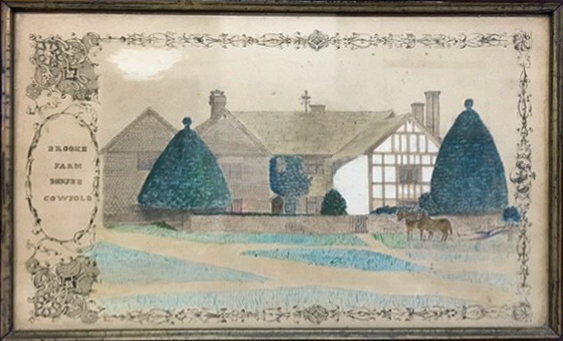 We were recently contacted by a visitor to our website who came across a picture of Brooke Farm House (now Brook Place) whilst clearing out an elderly relative’s belongings. They also contacted Westbourne Local History Group.
We were recently contacted by a visitor to our website who came across a picture of Brooke Farm House (now Brook Place) whilst clearing out an elderly relative’s belongings. They also contacted Westbourne Local History Group.
The painting had belonged to a Mary Ann Comber and her brother Henry. As children, they had lived at Brooke Farm House, Cowfold with their parents and in later life they lived in Westbourne. Their father was Thomas Comber, who was born in Ardingly in 1839, worked in Hurstpierpoint before eventually moving to Cowfold where, on the 1871 census, he was a tenant farmer of 50 acres. He unfortunately died in 1878 (when Mary Ann and Henry were still young). Their mother, Lydia Packham, was born in Hurstpierpoint in 1837 and her family were local millers. (Her brother, Charles, ran Cobb’s Mill in Sayers Common, Hurstpierpoint for a number of years.)
By the 1891 census Lydia and a number of her children, including Mary Ann and Henry, had moved to Westbourne, a village west of Chichester. The census records Lydia’s occupation as Grocer, Mary Ann’s as a Booking Clerk and Henry’s Butcher’s Assistant. Lydia and Mary Ann moved back to Hurstpierpoint and were reported in the 1901 census to be residing at St Christopher’s Home, with Mary Ann the Matron. Lydia died in 1905 and Mary Ann remained in Hurstpierpoint for a few years and then, at some point, returned to Westbourne, where she died in 1951.
We have not been able to place a date on the picture of Brooke Farm House but do know that, from the1870s to 1880s, paintings of houses in Cowfold still exist and some have handwritten notes on the back indicating that they may have been produced for a local art circle, for example, ‘Subject for May 1881 – Village Scenes’, together with a list of names, each in a different handwriting under a heading ‘Votes’.
As the current owner no longer wanted the picture, along with Westbourne Local History Group, we contacted the present owner of Brook Place, who would love to have it.
We are very pleased that the painting will now be reunited with its home and has returned to Cowfold!
Bookshelf
Here is a selection of books, either published by the Society or covering local topics that should be of interest to our members.
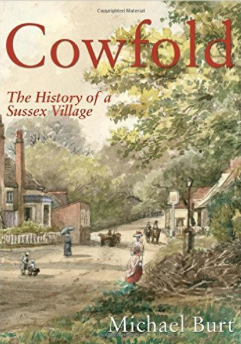
Cowfold: The History of a Sussex Village
Author: Michal Burt
Cowfold: the history of a Sussex Village is a detailed account of the over 780 year life of the village, from the very earliest times to the present time. It is the story of the people who have lived in and around the village and have made it what it is today. Cowfold village has never been the subject of startling or momentous historical events.Rather, it is a typical Sussex village where life has followed a well-defined, familiar and easy pattern over the centuries of its existence; that is the village's charm and its legacy. This book records Cowfold's history through text, pictures, photographs and the recent charming memories of a number of those who have witnessed, as school children and adults, the changes to village life over the last 90 years. It chronicles the development of the village from a small settlement in a clearing in surrounding dense woodland through the emerging village growing up around its Church and heavily influenced by the surrounding farms and nearby manors, to the self-sustaining community of the 19th and early to mid-20th century, and to the diverse and thriving village of today. This book is a tribute to, and legacy of, that development and those people, past and present.
The book can be purchased from the author, Michael Burt; he can be contacted by email at:
michael.burt1911@btinternet.com
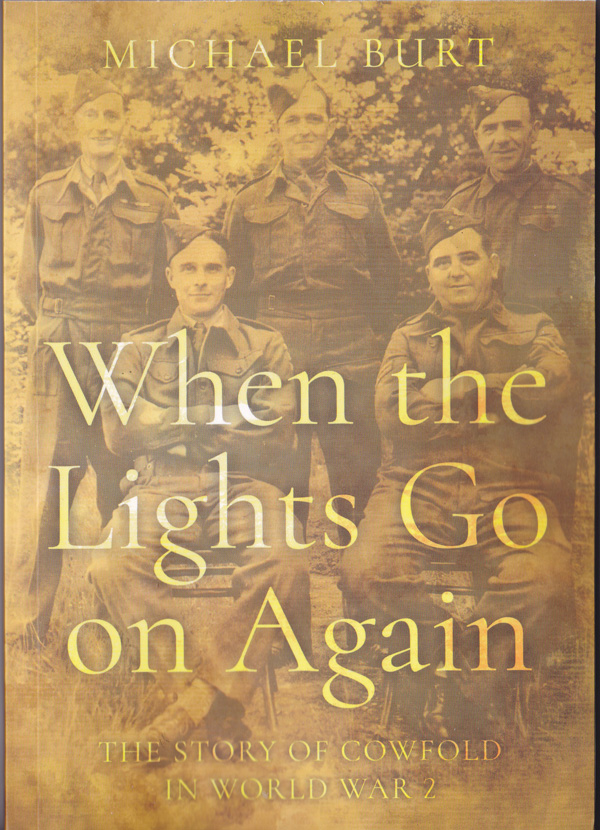
When the Lights Go On Again
Author: Michael Burt
Here is a review of the book by Kate Schuler that was published in Sussex Life:
Based on the recollections of 11 Cowfold residents who were children during the 1940s, this book details a community keeping calm and carrying on against a backdrop of war, blackouts, food shortages and rationing. It includes some lovely details – a comical Home Guard training exercise, a child who picked out his returning father on the station platform, despite never having met him – but what comes through is that, for children, the war brought some longed-for excitement. Posing for photographs beside bomb craters, attending variety shows put on by billeted Canadian soldiers, and even dog fights overhead were thought thrilling. While the details may be specific to Cowfold, this book will certainly resonate more widely.
The book is available from Matador (troubador.co.uk/matador) at a price of £12.99.
Or contact the author, Michael Burt at:
michael.burt1911@btinternet.com
to purchase a copy of the book.
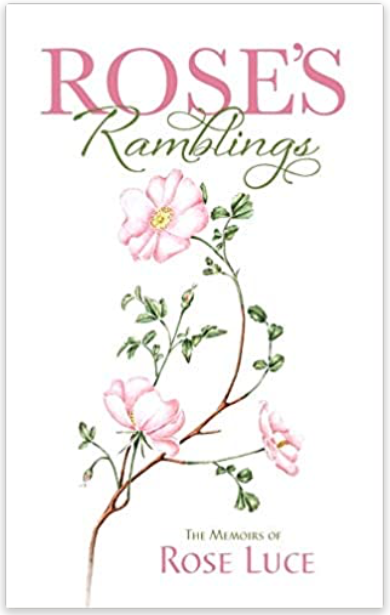
Rose's Ramblings
Rose’s Ramblings
Rose Luce has had an unusually varied and interesting life. Her early family life and jobs in parliament and America, later including a leading role in the English-Speaking Union and much charitable work in the UK and Gibraltar, were buttressed by her love of music and singing in choirs. Above all, as the wife of Richard Luce, she supported his long and varied career over 60 years as an MP, Minister, Vice-Chancellor, Governor and Lord Chamberlain to The Queen’s Household. Richard writes in his memoirs Ringing the Changes: “I cannot describe adequately in words what her support, love and companionship throughout our marriage have meant to me. I could not have managed my work in Africa, the struggle to get into Parliament, politics, being a Minister, a Vice-Chancellor, a Governor or Lord Chamberlain without her. ”In this book, Rose describes in the most vivid, entertaining and human way her life supporting Richard in all his many and challenging tasks.
Amazon Books 23 November 2020
£12.00
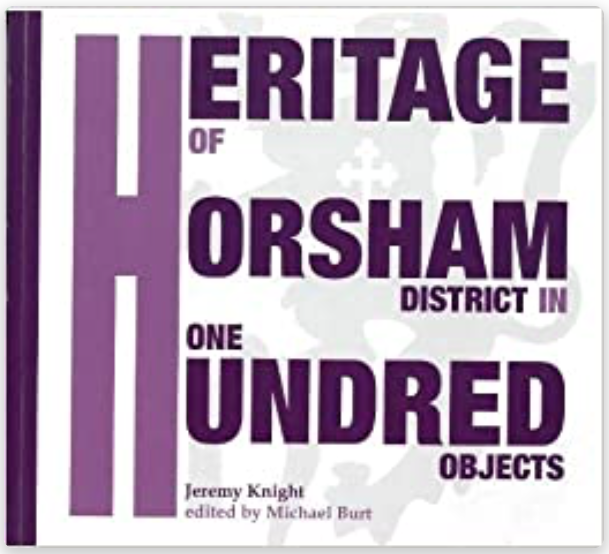
The Heritage of Horsham District in 100 Objects
The Heritage of Horsham District in 100 Objects
Author: Jeremy Knight
Edited by: Michael Burt
Jeremy Knight has distilled thirty years of knowledge and understanding into a concise and accessible format. The book provides a superb companion and guide to a journey of discovery around Horsham District and its rich heritage and includes a number of objects found in Cowfold.
Learning, agriculture, industry, retail trade, domestic life and the military are just some of the topics covered by this remarkable book in a series of historical vignettes told through the objects.
The superbly and beautifully illustrated book is on sale at the Horsham Museum, Waterstones and the Steyning Bookshop.
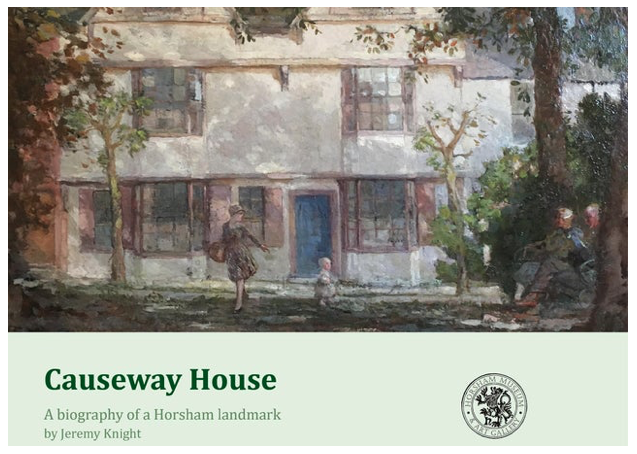
Causeway House: a biography of a Horsham landmark
Causeway House: a biography of a Horsham landmark
We look without seeing, walk past without really noticing. The past is often hidden in plain sight waiting to be discovered. How many of us have walked past 9 Causeway and thought “that’s an old building” without any deeper consideration? In order to rectify this oversight, Jeremy Knight has told the story of the building in a new, exciting and visually interesting book; Causeway House: a biography of a Horsham landmark.
Known today as the home of Horsham Museum, our historic building has been on this site for 600 years and, as the book Causeway House: a biography of a Horsham landmark reveals, it has had an eventful life! From being the home of the Tudor equivalent of a celebrity, giving its occupants the right to vote for 6 MPs, to having a fake past deliberately created, Causeway House has been the home of merchants, lawyers, a royal tutor, a tailor’s daughter who went from being the subject of a scandal to a wealthy heiress, and much more.
Causeway House became home to the Museum during the Second World War, and as late as 1983 it stopped being a residence. The book, written by the current Curator, is a visual delight. Entertaining without being heavy going, it is packed full of interesting stories. Published to mark the 600th birthday of the building, Causeway House: a biography of a Horsham landmark reveals a building hidden in plain sight. Priced at £7.50 plus postage. To order your copy please email: museum@horsham.gov.uk or contact the museum on 01403 254959. Also available to purchase at Waterstones in Horsham.
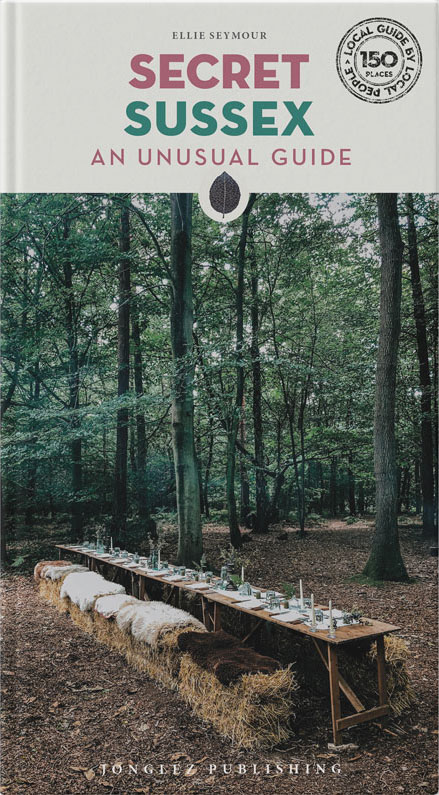
Secret Sussex
Author: Ellie Seymour
Secret Sussex is the ultimate travel guide to Sussex unknown, taking you off the beaten path away from the tourist crowds in search of the unique, unusual and overlooked.
It features 150 well-hidden treasures waiting to be discovered. Whether you’re a lifelong local, an armchair traveller or curious visitor new to Sussex and want to get to know it better, I’ve written this book for you.
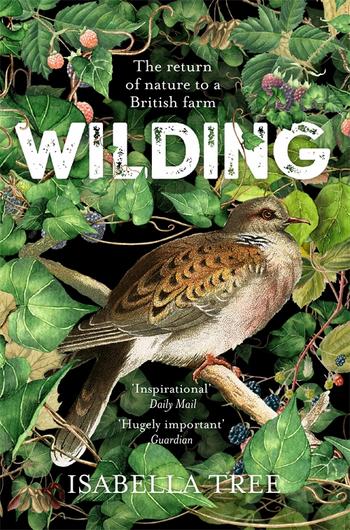
Wilding
Author: Isabella Tree
Forced to accept that intensive farming on the heavy clay of their land at Knepp was economically unsustainable, Isabella Tree and her husband Charlie Burrell made a spectacular leap of faith: they decided to step back and let nature take over. Thanks to the introduction of free-roaming cattle, ponies, pigs and deer – proxies of the large animals that once roamed Britain – the 3,500acre project has seen extraordinary increases in wildlife numbers and diversity in little over a decade.
Extremely rare species, including turtle doves, nightingales, peregrine falcons, lesser spotted woodpeckers and purple emperor butterflies, are now breeding at Knepp, and populations of other species are rocketing. The Burrells’ degraded agricultural land has become a functioning ecosystem again, heaving with life – all by itself.
Personal and inspirational, Wilding is an astonishing account of the beauty and strength of nature, when it is given as much freedom as possible.
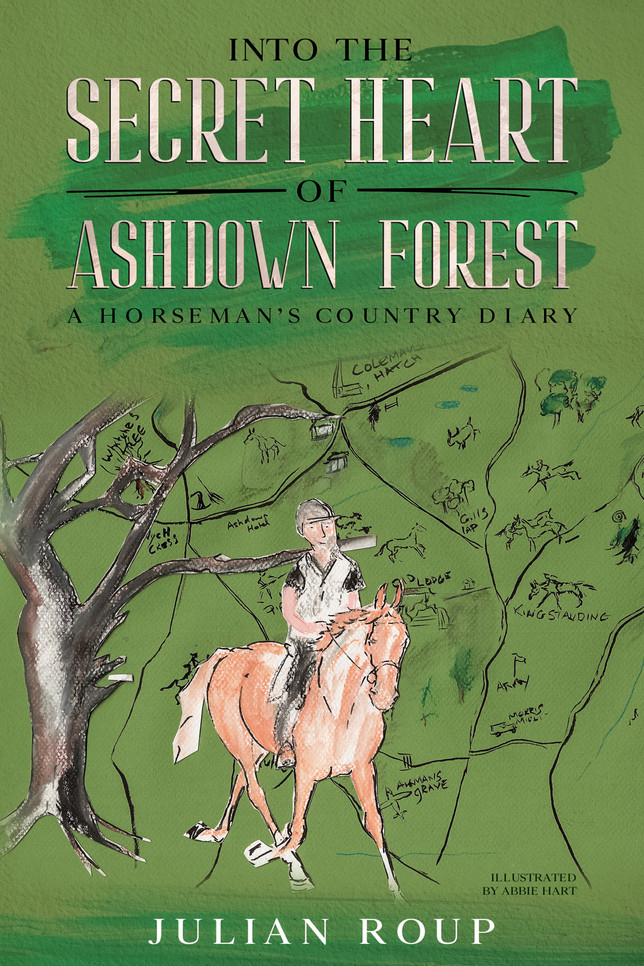
Into the Secret Heart of Ashdown Forest
Author: Julian Roup
Julian Roup’s love letter to the destination is a timely reminder of the magnetic allure of the tranquil spot within the High Weald Area of Outstanding Natural Beauty in East Sussex. The ‘Kingdom’, as Julian calls it, has inspired literary greats including A. A. Milne, Sir Arthur Conan Doyle, Ezra Pound and W. B. Yeats and it’s easy to understand why. Julian has lived there for 40 years and, in this memoir, he chronicles his passion for the landscape through 22 essays.
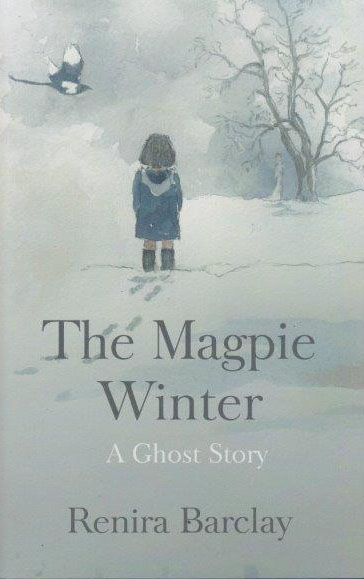
The Magpie Winter
The Magpie Winter
By Renira Barclay
The book tells the story of Camellia and her brother living just outside Cowfold in the winter of 1962-63.
Camellia’s troubles begin one foggy day when she is out hunting with her adopted mother and the ghost makes her first appearance.
From then on there are strange goings on with faces in the mirror, animals emerging from their graves - and a whole lot more......
The author was adopted by Pat and Elizabeth Colvin and grew up at Woldringfold in Cowfold. She went to the local village school and, from there, went to Hatchlands School in Cuckfield, before going on to Benenden in Kent - alma mater of Princess Anne.
And now Renira, who has had much success as an artist, is penning her second novel.
The book is a parallel of the author’s own life and the ghost in the story is her great-grandmother on her adopted father’s side - Adelaide Godman. (A window in St Peter’s Church, Cowfold, is dedicated to Adelaide who died on Christmas Eve 1896, aged 36.) It also includes her primary school teacher, Miss Wiggins – who she loved.
The book is available from Blackwell's at a discounted price of £8.71 (with free p&p).
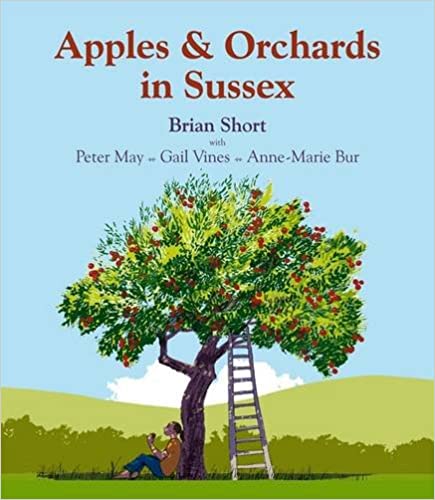
Apples and Orchards in Sussex
Authors: Brian Short, with Peter May, Gail Vine and Anne-Marie Bur
Apples and Orchards in Sussex came about in response to the current challenges facing people who eat fruit as well as fruit growers - the grubbing up of commercial orchards, the scarcity of heritage varieties of apples associated with Sussex, the domination of imports in shops and the loss of domestic skills such as cooking with apples.
Professor Brian Short has trawled the archives of the Kew Gardens, the Royal Horticultural Society and museums to build up a detailed picture of how orchards originally came to England and to Sussex.
Oral historians have gathered the stories of people across Sussex with inside knowledge of fruit-growing in our past and present.
The book contains the first definitive list and photos of Sussex apple varieties and Illustrations from historic archives, watercolours by botanical artist Nicky Ashford and maps of Sussex showing historical orchard distribution.
It includes Interviews with growers past and present and information on where to learn orchard skills and where to buy local fruit and trees.
Finally, it describes how to contribute to a more durable and nature-friendly fruit-growing future.
Professor Brian Short has fulfilled a number of roles at the University of Sussex, including Geography Head of Department from 2001 to 2004. His publications now number over 60, including the co-editorship of the very successful An Historical Atlas of Sussex.
Contributors Peter May, Gail Vine and Anne-Marie Bur together have a wealth of knowledge of orchard-growing, the natural world and Sussex communities.
Publisher: Action in Rural Sussex
Buy used from Amazon/World of Books £19.09
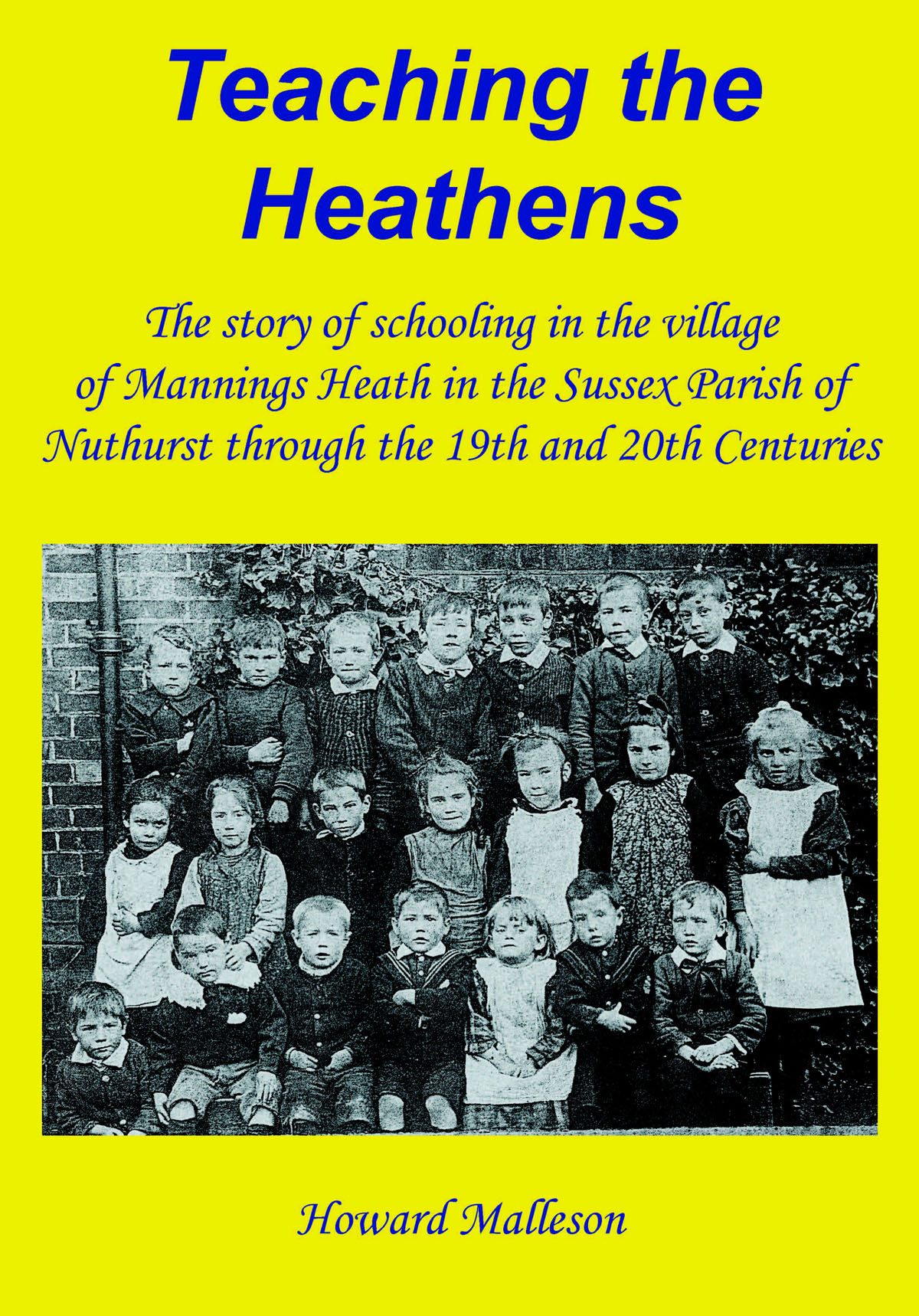
Teaching the Heathens
Teaching the Heathens: The story of schooling in the village of Mannings Heath in the Sussex Parish of Nuthurst through the 19th and 20th Centuries
Author: Howard Malleson
This story is about the long-lost school at the heart of a Sussex village - Mannings Heath - in the parish of Nuthurst. Researching and writing the story has been a project of the Nuthurst Local History Society. The result has been a record of 150 years of "teaching the Heathens," and of village life through the 19th and 20th centuries. It includes religious, educational and political events that shaped the teaching of the children and the life of the village through times of major social and industrial change including violent riots, rebellion and harsh punishment.
The story reveals the far-reaching and positive developments in the education of children, the impact of two world wars on village life, village politics and rivalries, battles with County and National authorities, clashes between the Methodist and Church of England leaders and, most importantly, acts of individual generosity and endeavour - all the stuff of real life.
For this novice author, the process of researching and telling the story has been a voyage of discovery - both of historical research and of the 150 extraordinary years in the life of a small West Sussex village.
The book is available from Book Depository (£11.63)
Magazine Rack
Here are links to recent magazine articles that feature the Society and its activities.
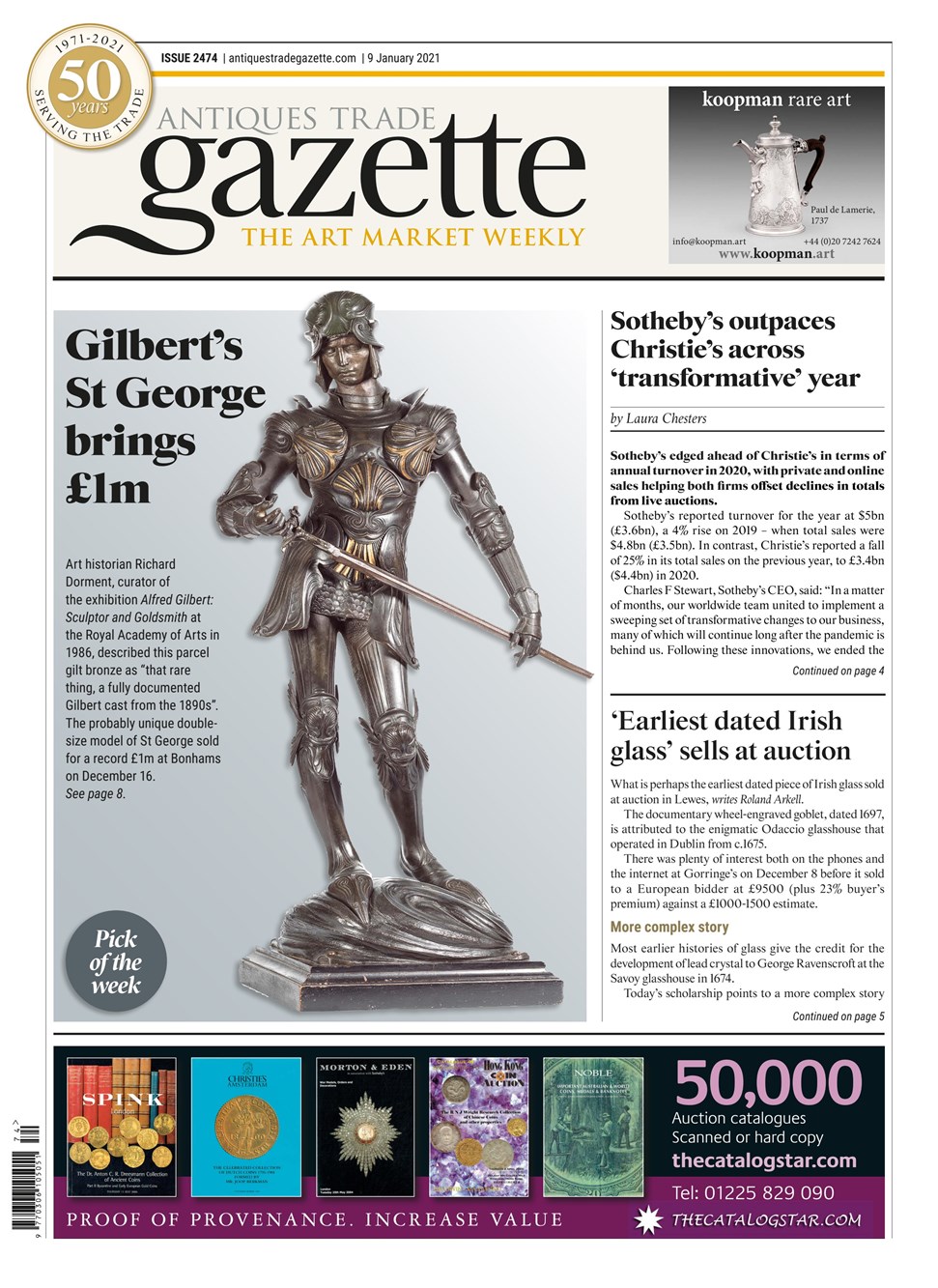
Antiques Trade Gazette 9 January 2021
Horsham Museum and Art Gallery has bought a presentation watercolour for three stained glass windows in St Peter’s Church from London dealers Abbott and Holder with a contribution from the Society. The full article is here:
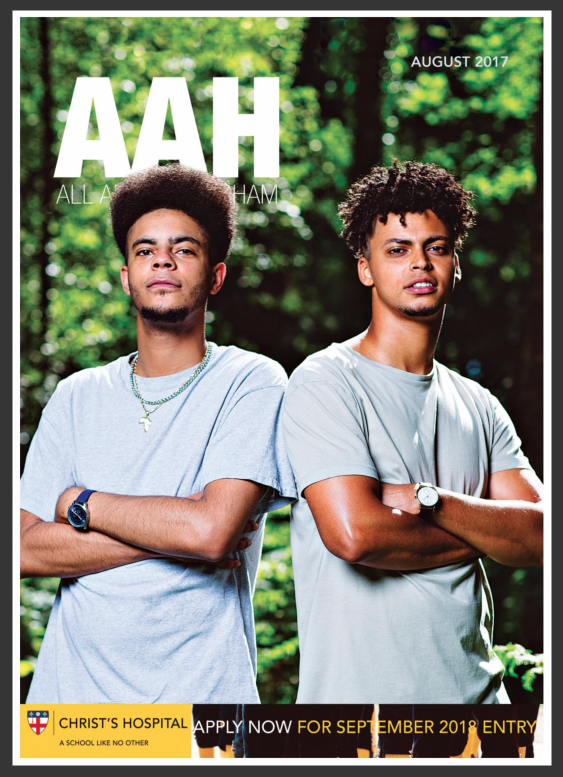
All About Horsham August 2017
In 2017, members of the committee took part in a group discussion for All About Horsham. This included a lot of information on the history of our village, as well as the activities of the History Society itself.
The full article can be viewed here.
More Links to Pages Recently Added to the Website
The following items have recently been added to the website. Please click on the images and take a look!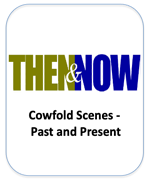
Heritage of Horsham District in One Hundred Objects
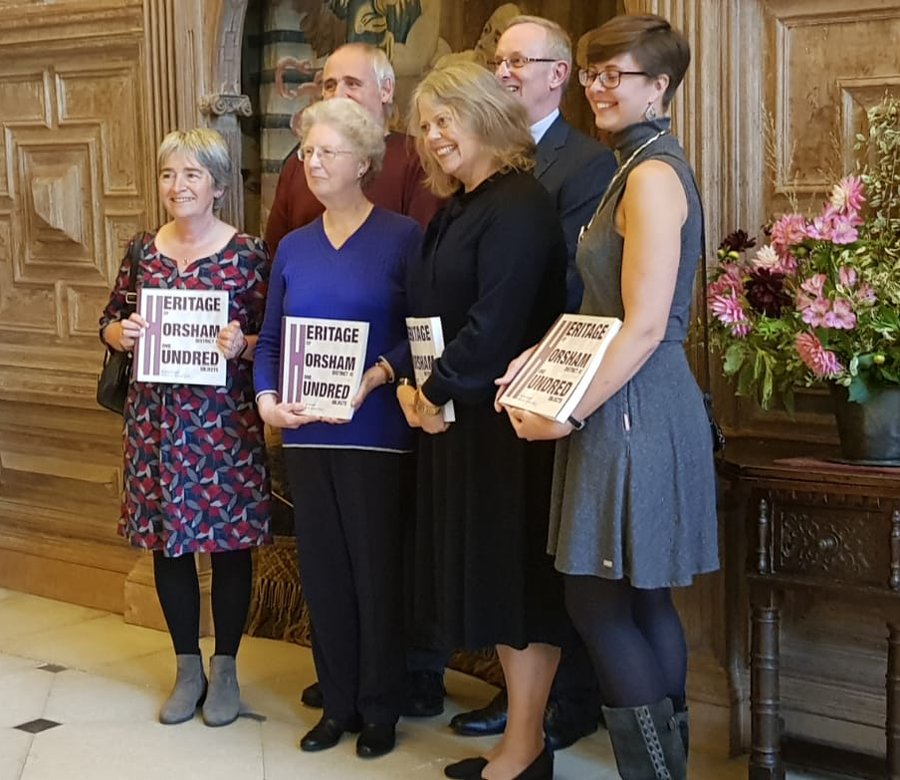
Lady Emma and members of the team
The book launch of “ Heritage of Horsham District in One Hundred Objects” was held on Monday 7 October 2019 at Parham House, hosted by Lady Emma Barnard and attended by over fifty guests, including representatives of Heritage Forum member organisations and Jonathan Chowen, Horsham District Council Cabinet Member for Community and Culture.
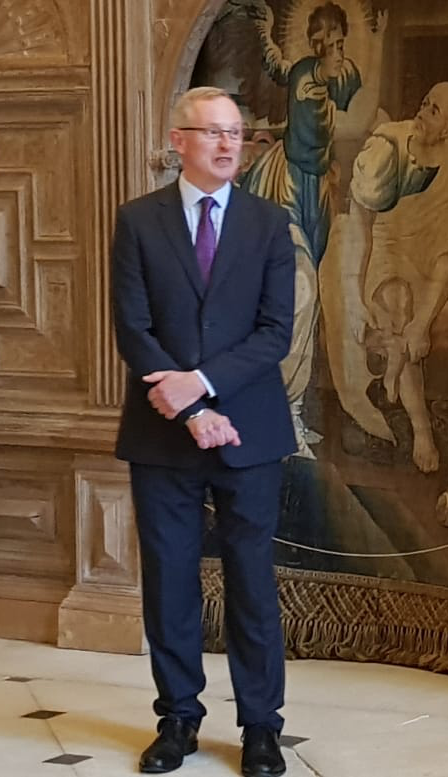
Jeremy Knight, Curator of Horsham Museum and Art Gallery
The book has been written by Jeremy Knight, Curator of Horsham Museum and Art Gallery, and edited by Mike Burt, Chairman of Cowfold Village History Society and Coordinator of the Horsham District Heritage Forum, with contributions from Heritage Forum members and the rest of the Horsham Museum team.
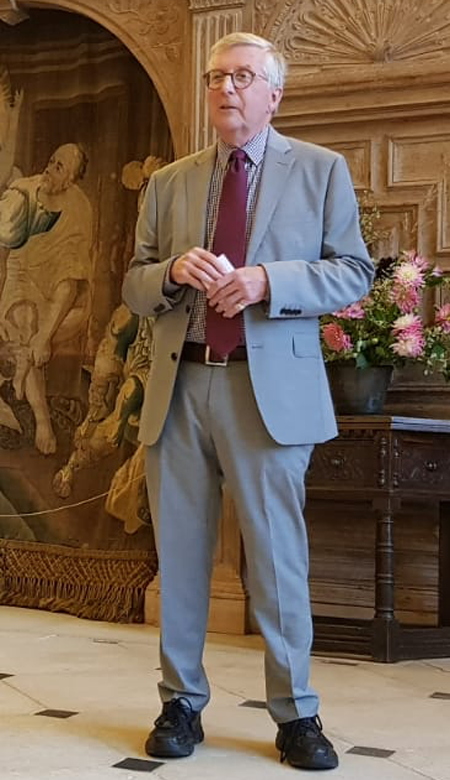
Mike Burt, Chairman of Cowfold Village History Society
It was made possible through a grant awarded by the 2019 Horsham District Year of Culture and distils thirty years of knowledge and understanding into a concise and accessible record told through the one hundred objects. Transport, agriculture, local politics, the retail trade, domestic life and warfare are just some of the topics covered by this beautifully illustrated book, which provides a superb companion and guide to a journey of discovery around the district and its rich heritage.
The book, priced £19.99, is on sale at the Horsham Museum and a number of local bookshops, including Waterstones and the Steyning Bookshop.
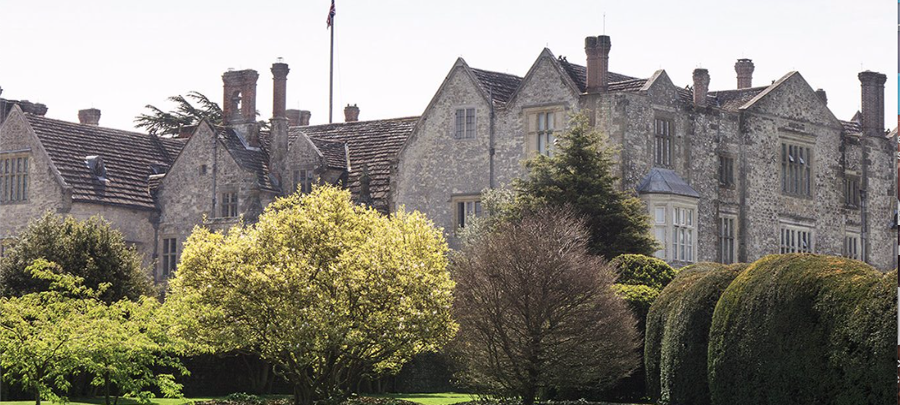
Parham House
“Cowfold” Tank Locomotive
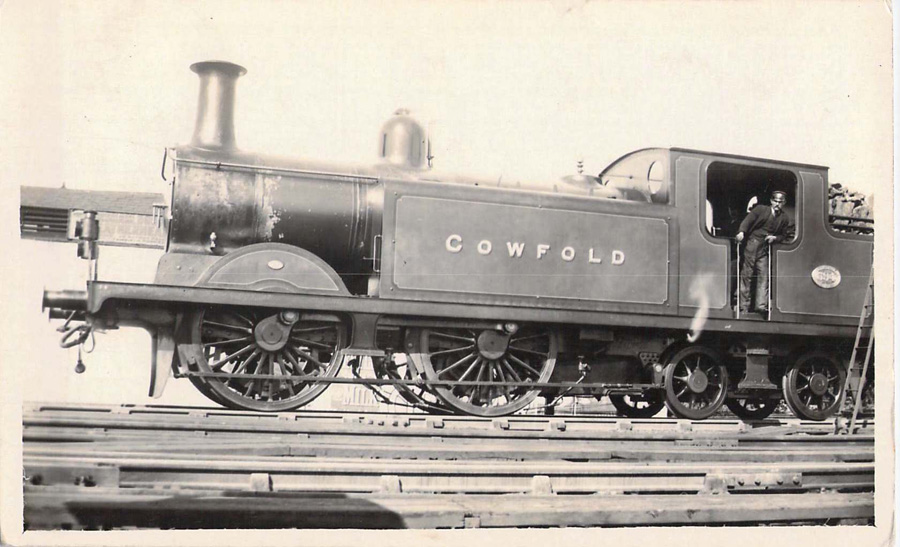
“Cowfold” D Class tank locomotive
The Society has recently acquired a postcard showing a D Class 0-4-4 tank locomotive that was named after our village!
The engine, No. 394, was designed by R J Billinton and built at the Brighton Works of the London, Brighton and South Coast Railway (LBSCR) in March 1894.
The D Class tank locomotives were used for working passenger trains along both country and main lines and some would have operated from railway sheds at Brighton and Horsham. It appears that a number of the engines were named after stations within the LBSCR region.

